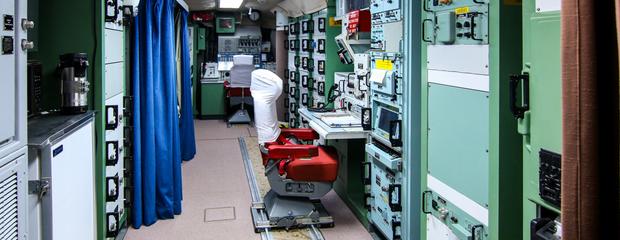Air Force Exploring Plans To Lay New Infrastructure Lines From Cheyenne Base To Colorado Missile Silos
(CBS4) - The U.S. Department of Defense is in the process of replacing its 400 Minuteman III intercontinental ballistic missiles as part of an upgrade to the country's defense system.
Small towns in northeastern Colorado are seeing the first steps taken toward that goal -- literally -- as military personnel visit plots of property surrounding the existing Minuteman silos networked throughout that part of the state. The Air Force is gathering data to compile an environmental impact statement, a necessity before any dirt is disturbed.
And plenty of digging is proposed -- approximately 1,780 miles of utility trench between three Air Force bases and their surrounding missile fields. Modern communications capabilities, most importantly, will be buried in the trenches, upgrading the connection between the bases and the existing missile silos.
This includes missile silos in northeastern Colorado presently operated and maintained by F. E. Warren Air Force Base in Cheyenne. A University of Wyoming count of silos found 54 near the towns of Peetz, Stoneham, Raymer, Crook, Proctor, Padroni, Buckingham, Sterling, Keota, and Grover. Rows of wind turbines have been erected recently around a handful of the sites.
Warren AFB's missile field also extends into parts of Wyoming and Nebraska. The project's other bases are Malmstrom AFB in Montana and Minot AFB in North Dakota.
Preliminary analysis, according to the military, indicates more than 90 percent of new trenching would occur on private land.
In April, the Air Force and Warren AFB notified Weld County Commissioners that it intended to send out notices to county residents living in proximity to the silos. The requests for right-of-entry asked for permission to enter private land in order to "survey potential threatened and endangered species
and habitats, and wetlands or archaeological areas of concern" pertaining to the EIS.
The Air Force's notice asked residents to sign a contract allowing personnel access to property for the upcoming trench digging:
"These utility corridors would be in addition to the existing utilities connection to the Launch Facilities and Missile Alert Facilities....The utilities would be installed in a 25-foot-wide temporary easement and maintained in a 16.5-foot permanent easement. Temporary easements would be sized to accommodate access and required equipment, and to provide temporary spoils storage. The utility trench would have a typical depth of 4-8 feet with a finished footprint approximately 2-feet wide. Directional drilling would be used as needed to install utility lines beneath roadways and stream crossings, and near sensitive environmental resources. In cases in which directional drilling is required, the width of the easement and depth of the trench would depend upon the obstacle being avoided....Upon completion....disturbed areas would be reseeded and restored, as necessary."
Messages placed with Warren AFB Public Affairs that requesting additional details of the EIS surveys and project were not returned.
The upgrades are one segment of the U.S. Air Force's Ground Based Strategic Deterrent (GBSD) concept. Northrop Grumman was awarded the primary engineering and manufacturing contract in September 2020 to develop the new missile system. Subcontractors include Aerojet Rocketdyne, Bechtel, Clark Construction, Collins Aerospace, General Dynamics, HDT, Honeywell, Kratos, L3Harris, Lockheed Martin, and Textron Systems.
The current Minuteman III missiles would be decommissioned and disposed. The missiles were installed in the 1970s but much of the launch, command, and control apparatus dates back to the 1960s, according to a description the U.S. Department of Defense's 2021 budget request.
The total money budgeted for the proposed GBSD system: more than $1.5 billion.
Construction could begin in the spring of 2023.
In a statement before the Senate Committee on Armed Services in February of 2020, Commander Charles A. Richard of the U.S. Strategic Command stressed the importance of an upgrade in the country's nuclear capabilities:
"...the Nation is at a critical juncture regarding the future of our nuclear forces. Since the end of the Cold War, we led the world in reducing our nuclear stockpile
while increasing transparency. While we reduced the number and types of nuclear weapons in our arsenal, our adversaries went in the other direction and continued to modernize and expand their strategic capabilities. We now find ourselves fielding a reduced Cold War era arsenal against a larger, more modern, and more varied Russian force and a continually improving and growing Chinese force....We understand competition does not equal conflict, and war does not have to be an inevitable conclusion in an era of great power competition. However, we must be responsive to the increasing desire for state and non-state actors to reshape the world in their favor, doing so at the expense to the security of our Nation, our Allies, and our partners, and accepted international norms and rules."
The National Park Service took over a former Atlas E missile site when it was decommissioned in 1965. It is located in Weld County.






